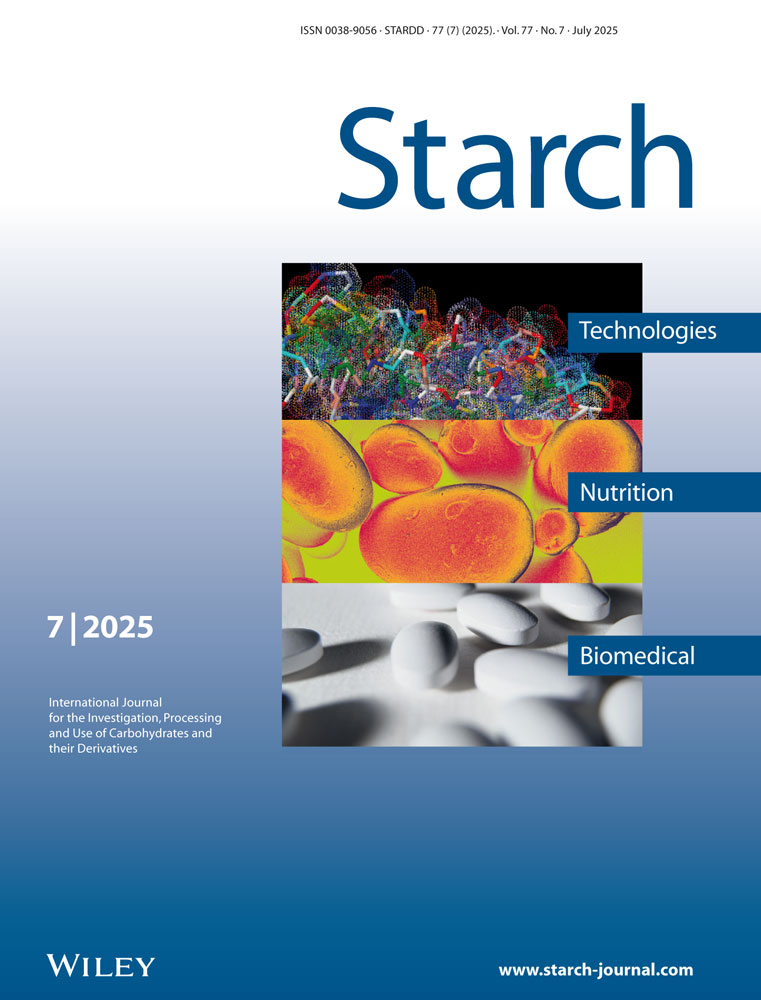Hydrolysis of Native Wheat and Corn Starch Granules by Glucoamylases from Aspergillus Niger and Rhizopus Niveus†
Contribution No. 911, Department of Grain Science and Industry, Kansas Agricultural Experiment Station, Manhattan 66506. Presented at the 60th Annual Meeting of the American Association of Cereal Chemists, Kansas City, October, 1975.
Abstract
The action of glucoamylase I and II (α-1,4-glucan glucohydrolase, E.C. 3.2.1.3) from Aspergillus niger and the glucoamylase from Rhizopus niveus on native wheat and corn starch granules was followed by using scanning electron microscopy (SEM) and by measuring the glucose released by enzymatic attack. Two distinct patterns of attack were observed. Glucoamylase I and the glucoamylase from R. niveus attacked the granule surface relatively uniformly, resulting in large disclike depressions. Glucoamylase II, while showing some disc-like depressions, produced small grooves (furrows) in the surface of the granule. Similar patterns were observed for both corn and wheat starch granules, except that attack by glucoamylase I and the glucoamylase from R. niveus on wheat starch granules also developed along the equatorial groove (not easily seen until the granules were exposed to enzyme solutions). Measuring glucose released indicated that hydrolysis by glucoamylase I and by the glucoamylase from R. niveus were nearly equal in extent and were about twice that by glucoamylase II.




